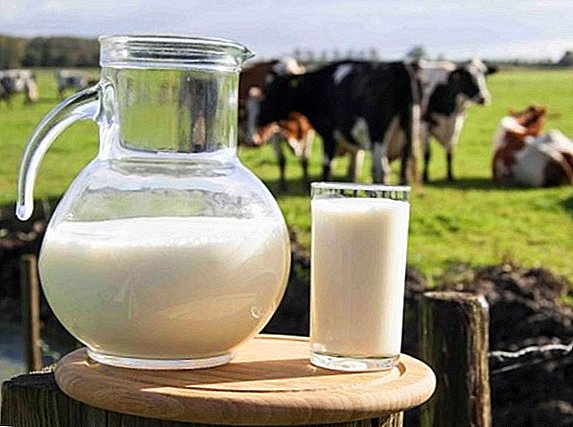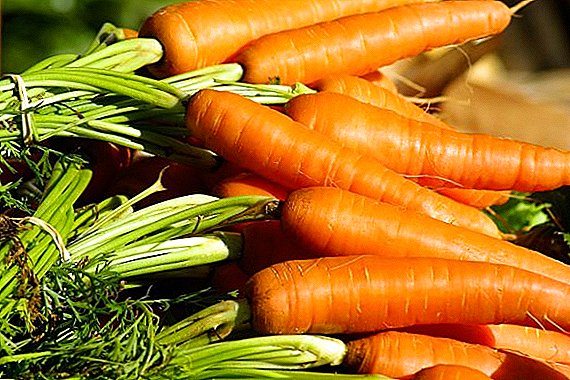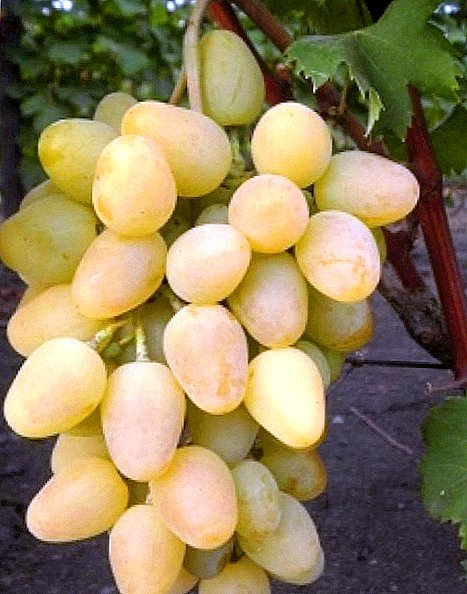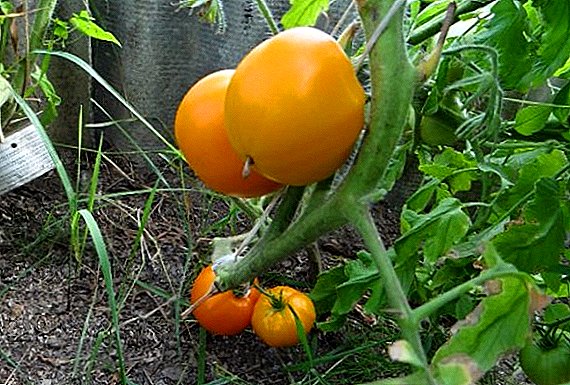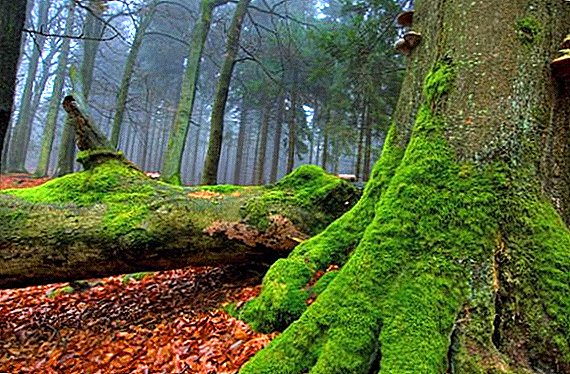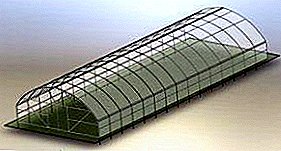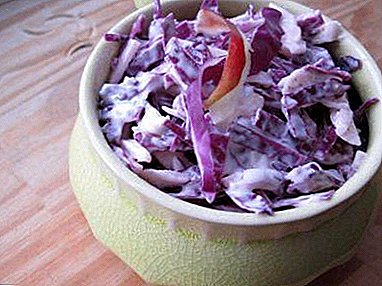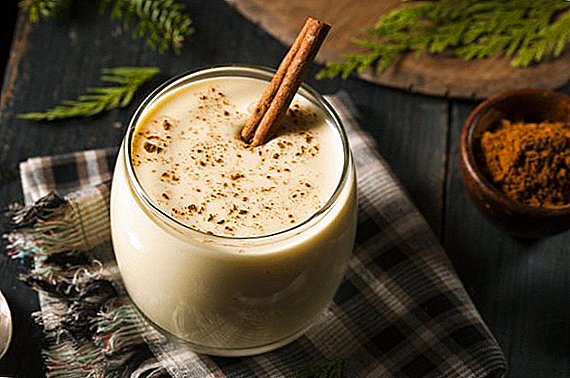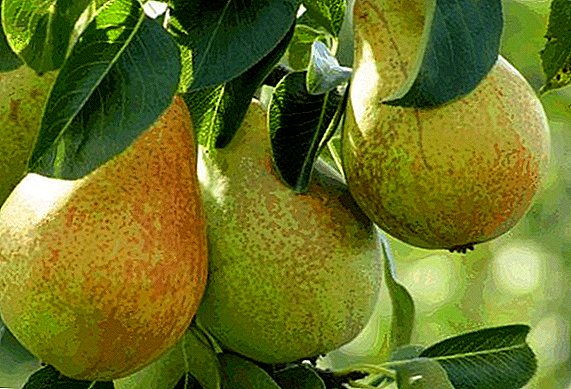 Sweet pear fruit has long been popular. However, these trees for a long time carried the climatic conditions of our region, and the fruit quickly deteriorated. In this regard, it became necessary to breed winter varieties that are not afraid of frost and can be stored for a long time in appropriate conditions. From the recently bred one can distinguish the sort of pear "Hera", with a description and features of the cultivation of which. let's get acquainted in this article
Sweet pear fruit has long been popular. However, these trees for a long time carried the climatic conditions of our region, and the fruit quickly deteriorated. In this regard, it became necessary to breed winter varieties that are not afraid of frost and can be stored for a long time in appropriate conditions. From the recently bred one can distinguish the sort of pear "Hera", with a description and features of the cultivation of which. let's get acquainted in this article
Inference history
"Hera" was derived by scientists S. P. Yakovlev, A. P. Gribanovsky, N. I. Saveliev, M. Yu. Akimov from the All-Russian Research Institute of Genetics and Breeding of Fruit Plants named after I. Michurin. Pear obtained by crossing varieties of "Daughter of Dawn" and "Real Turin". Since 2003, this variety has been on trial.
Winter varieties are also different varieties such as "Fairytale", "Krasulya", "Rogneda", "Kokinskaya", "Severyanka", "Lada", "Favorite Yakovleva", "In memory of Zhegalov."
Tree description
Hardwood crown Fruit "Hera" is like a pyramid, a small, red-growing. Stems are not thick, brown, lint-free, small lentils (pimples) are noticeable on young branches.
Leaves small, green, shiny, oval-shaped, tapering at the end, curved, at the edges with small notches. Cuttings are medium sized, bare. Buds are round, smooth, pressed to the branches.
Did you know? The first memories of pear recorded in the treatise of Cato the Elder "On Agriculture", which has more than 2 thousand years.
Fruit Description
Hera bears fruits with large, broad fruits weighing up to 250 g of perfect green shape with a rosy spot that turn yellow during ripening. The fruit has a pleasant aroma and a medium-thick skin that is covered with a brown fine mesh.
Peduncle growing from a small funnel and tilted to the side.
Core shape rounded, brown colored seeds, small, tapering up, residing inside closed chambers.
Pulp fruit color beige, juicy, loose, pleasant, with small grains, sweet, with a little sourness. At tasting, the taste of this pear was estimated at 4.3 points on a five-point scale. 
Lighting Requirement
Plant a pear "Hera" is better from the south or west, so that was sunny but not excessive. Especially picky tree to the light during the flowering period.
Important! Excessive sun exposure is especially harmful to young trees; it can cause bark burns. When there is insufficient light, the fruits of pears become hard and sour.Sometimes the crown on a pear can grow strongly in the summer. Then, to ensure proper lighting, the branches must be thinned.
Sunlight affects the shape of the crown of a tree, with its deficiency the leaves grow only along the edges of the branches, the crown stretches upwards, the bases of the branches are devoid of leaves, the leaves themselves grow dull and thinner. 
Soil requirement
The soil for planting pears "Hera" requires fertile, lumpy, with weak acidity, black soil is best suited. Sandy soil does not retain moisture, because of what the fruits become drier and more sour to taste.
In arid summer, a tree, especially a young one, needs watering, otherwise the ovaries and young branches may crumble. But an excess of moisture leads to a disease of the roots.
Do not often fertilize the soil for pears, it can worsen the condition of the fruit. It is possible to improve the quality of the soil by its aeration (loosening).
Learn about the intricacies of planting pears in spring and autumn, pruning and preparation for winter.
Pollination
For the formation of fruit ovaries need to have other varieties of pears for pollination.
Did you know? More than two-thirds of the flowers of the Hera pear are barren flowers.You can make several grafts of pears of other varieties on the tree. Additionally, it is not necessary to pollinate.

Fruiting
This variety is typical mixed type of fruitingwhen the fruits ripen on branches of different ages, from lateral buds, on spears. It begins to bear fruit at the age of 4-5 years.
Gestation period
"Hera" ripens after September 10 - comes removable maturity. Consumer maturity pears with proper storage lasts up to 5 months. During storage, the ripe fruit continues to ripen and the taste improves;
Important! For harvesting pears, you must choose dry sunny weather and spend it in the middle of the day.
Yield
This variety is characterized by high yields, it can reach 40 kg from a tree. Harvest better in gloves made of cloth, tearing along with the stem. Cover the basket with a cloth so that the fruit is not beaten.

Transportability and storage
"Hera" is well preserved under the following conditions:
- Fruit should be stored in a dark, well-ventilated room with a temperature of up to +1 ° C and humidity of 85%. Due to low humidity they lose juiciness.
- Fruits are stored better in a low wooden box, covered with a cloth, interspersed with sawdust, sand, leaves, or wrapped in paper each. A cold plastic bag can be used if air is let out of it.
- You can not tear off the stem, store spoiled or overripe fruit.
- It is not recommended to put vegetables near pears, it can spoil their taste.
- During the storage period, the fruit must be picked.
- "Hera" can be frozen, if before that you wash, peel and dry.
- Cut fruit is stored in the refrigerator no more than a day.
Also popular are kolonovidnye varieties of pears.
Disease and Pest Resistance
Pear "Hera" is exposed to rust and powdery mildew.
Rust caused by fungi and manifests itself in the formation of a rash, within which there are spores of a rusty-colored fungus. "Hera" grows worse, the taste of the fruit and the seed deteriorate. Fight the fungus by spraying and seed treatment. 
Mealy dew - a fungal disease, has the appearance of a white plaque on the leaves or fruits. Sick pears begin to crack and rot, the tree gradually loses growth and dries out. A good result in the fight against the disease gives spraying means based on sulfur or "Karatan". 
This variety is not susceptible to scab, entomosporiosis, Septoria and spotting.
Among the pear pests "Hera" overcome:
- sucker;
- leafworm;
- moth;
- fruit sawfly;
- apple blossom tree;
- winter moth;
- hawthorn;
- ringed silkworm and others
Pear Copper (listbloshki) sucks the juice from the plant, forming copper dew, leading to drying of flowers, foliage and deteriorating growth. 
Pear moth - This is a small butterfly with lead wings. Caterpillars make their way into the seeds, destroying them. 
Pear fruit sawfly lays eggs in flowers His larvae, hatching, eat the flesh of the fruit. 
Apple flower eater rarely hits pears. Its larvae feed on buds, flowers do not bloom. 
Winter moth - a small gray butterfly, the caterpillars of which damage flowers, buds, leaves.  Hawthorn - a butterfly with white wings with a black pattern, lays up to 150 eggs on the leaves of "Hera".
Hawthorn - a butterfly with white wings with a black pattern, lays up to 150 eggs on the leaves of "Hera".  Ringed silkworm - dark yellow butterfly, caterpillars absorb leaves and flowers.
Ringed silkworm - dark yellow butterfly, caterpillars absorb leaves and flowers.  Pest control includes the use of insecticides.
Pest control includes the use of insecticides.
Frost resistance
Adult "Hera" tolerates frost well, and the frost resistance of young wood can be improved. You can fertilize seedlings with nitrogen until mid-summer, then use fertilizers with phosphorus and potassium. From organic fertilizers, first make a solution of chicken manure, and then - ash. It is necessary to ensure that by the end of the summer the growth of the tree stopped.
Saplings for the winter wrap with sacking and tie coniferous branches, protecting it from frost. Tests conducted in research institutes showed that "Hera" resistant to frost down to -38 ° C.
Fruit use
Traditionally, pears are used for boiling jam, jam, compote, baking pies. The development of cooking led to the appearance of salads, creams, rolls, sauces with these fruits. They make side dishes for wild birds, they can be baked and stewed.
There are many recipes and ways to harvest pears for the winter.
In folk medicine, “Gera” is used to make a diuretic decoction, in dried form it is used to make a remedy for diarrhea, prostatitis is treated, and baked fruits help with lung diseases, diabetes, obesity, cardiovascular diseases, diseases of the gastrointestinal tract. 
Fruits remove harmful substances from the body, improve blood circulation and the immune system, lower cholesterol levels.
Beauticians recommend moisturizing masks from the grated pulp of the fruit, grapefruit juice and sour cream. For tired skin, lemon juice and whipped egg white are added to the pulp.
Did you know? In one fruit, "Hera" no more than 45 kcal, which means that it is well suited to the diet of people who watch their figure.
Advantages and disadvantages
In the breeding of fruit trees of this variety there are advantages and disadvantages presented below.
pros
Advantages of breeding pear "Hera":
- Frost resistance.
- Resistance to some diseases.
- The fruits do not cause allergies, are used in traditional medicine and cosmetology, rich in folic acid, potassium, iodine, tannins, arbutin.
- Durability, prolonged fruiting.

Minuses
Disadvantages of growing Hera pears:
- Lack of resistance to pests.
- Pears change color when stored poorly.
- Fruits should not be consumed by people with gastrointestinal upset.
- High yields can make the tree weak.
- Low cold resistance of seedlings.


